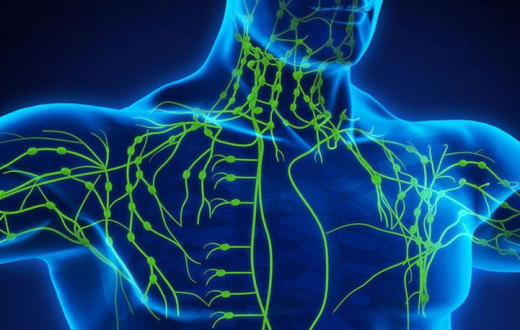By Anuradha Gupta | Posted: October 31, 2019
Weighing in
Health and slenderness are not synonymous. Various factors, tendencies, health conditions, and stages of life impact weight; imagine a baby, an athlete, someone with early childhood trauma or who is grieving, a pregnant lady, a kid on steroids, or an elderly person. Ayurveda, the Indian Science of Life, has always acknowledged these natural variations.
Weight shaming doesn’t help, either. In fact, weight shaming leads to unhealthy dieting, psychosomatic disorders, and maladaptive eating. There is an epidemic of obesity that continues unabated (WHO 1997), and equally, an epidemic of stress.
A UCLA study found that while you can lose 5 to 10 percent of your weight on a number of weight-loss diets, over time, a majority of people gain it all back–and then some. Quick-fix and generalized solutions don’t work. But Ayurveda can help.
Ayurveda and weight loss
Ayurveda is a diet and lifestyle-based preventative science that takes into account every aspect of an individual: their mind, body, and spirit, as well as their relationship with themselves and their community and environment.
In managing ailments, including excess weight, the Ayurvedic approach is to get to the root of an individual’s imbalances. Whether a client (Rogi) comes with a goal of weight management or knee pain, we assess their physical, physiological, psychological, genetic, emotional, social, and spiritual health. Management involves modifying the triad of lifestyle, sleep and diet and advising herbs and therapies. Recommendations are individualized and based on body constitution, imbalances, and the status of Agni (digestive, metabolic fire) and Ama (undigested food/impressions or toxins).
Weight nomenclature
Gurudev Sri Sri Ravi Shankar jokes that your height is destiny and weight is free will. We measure a healthy weight range by consulting an individual’s BMI (Body Mass Index), which takes into account both their height and weight. While being underweight (BMI < 18.5) is an issue, for the purposes of this article, we will focus on excess weight. BMI of 25 to 30 is classified as overweight and beyond that, obese. (These scales are often rated for age, gender, culture, and other factors, as we can’t equate, say, an Asian child with a Caucasian teenager). A BMI over 40 is considered morbidly obese, and at this stage in particular, there can be medical interventions to combat weight, like bariatric surgery or prescription medications.
Obesity is an illness
Medically, obesity is classified as a complex, non-communicable illness (AMA , 2013) involving excess amounts of body fat which increases the risk of other diseases like type-2 diabetes, cardiovascular disorders, psychiatric illnesses, certain types of cancer, joint and sleep disorders and higher rates of mortality.
National implications of an overweight population include increased medical care costs, lowered military eligibility, and compromised workplace productivity. A staggering 40% of adults and 19% of kids in the US are obese (CDC 2015-16). Nearly half of American adults suffer from at least one chronic, lifestyle-based disorder. This is within the context of a global public health crisis of simultaneous obesity and malnutrition; globally, nearly 2 billion people are overweight (WHO 2016).
Causes of obesity
According to both modern medicine and Ayurveda, obesity is caused by factors like genetics, socio-economic and cultural factors, endocrine disruptors, diet and lifestyle, age and stage of life, psychiatric complications like eating disorders, and could be caused by (or cause) ailments like PCOS, hypothyroidism, or as a side effect of medications like antidepressants or steroids.
Our often sedentary, stressful, and isolated lifestyles, along with easy access to processed fast food and junk, has an adverse impact, and lower socio-economic strata of society and developing countries are particularly vulnerable.
Ayurveda and weight management
Excess weight itself can be caused by other imbalances, and is managed in the overall context of the Rogi’s health.
Obesity, or Staulyam, has always been classified as a clinical condition (a kind of Santarpanajanya Vikara or Overnourishment Disorder like Prameha, or diabetes) with a preponderance of fat tissue, or Medo dhatu. Obesity is considered more serious than emaciation, and often comes with issues of absorption, assimilation, and deprivation of nutrients to other tissues.
Obesity Cases normally come with associated disorders.
Case 1: Jane is 50 years old and post-menopausal. She is a Vata-Pitta Prakriti with a Vata Vikruti, has Ama, and Vishama Agni (variable hunger). She was fond of sports but had crepitus, the drying of synovial fluids of the joints (Vata), and a soccer injury at 40. A couple of knee surgeries later, she gained weight. She went into early menopause with hypermenorrhea and underwent uterine-fibroid removal surgery. Despite weight gain, with her, Ama Management and Brahmana (Nourishing) therapies to address Vata would be our initial focus.
Case 2: Shweta is 32 years old, works in Silicon Valley and is Pitta-Kapha Prakriti with Kapha Vikrati. She has a dichotomy of stress and a cushy, sedentary life, heavy lunches and snacking at work, late hours, and she also tends to sleep late. Her BMI is 33, she has hypertension, and she is pre-diabetic. For her, Ama, Agni management, and weight loss are the primary goals.
Case 3: Asher is 11 and has asthma, allergies, and mild ADHD. He has a Vata Prakriti and Vata Vikruti. He takes steroids. He has a variable appetite, and despite being a picky eater, has gained a lot of weight. With him we would focus on improving immunity, and address his weight in the long term.
An Ayurvedic approach to weight management
1. Understand the different body types: Ayurveda classifies body types based on how much of the three Doshas (energy principals) we each have within us. Those with more Vata (air and ether) tend to be slender, and their weight fluctuates; Pitta (fire and water) people tend to be of medium build, and Kapha (earth and water) people tend to be of a heavier build and gain weight easily. There is a wonderful acceptance that comes with knowing that this is a tendency of the body, and that not everyone can be pencil thin.
2. Breathwork and Meditation: In Ayurveda, Aahar (diet) includes food, liquids, breath, and sensory perceptions. Research has shown a link between stress and weight gain; to manage weight, breathwork and meditation are wonderful tools!
3. Nidana Parivarjana (prevent causative factors): A balanced approach with modifications in Aahar (diet) and Vihar (lifestyle).
A mindful diet: Eat three balanced, regular meals, keeping in mind the Shadrasa, a cupped hand measure for portion size. Avoid snacking, have a light breakfast and dinner and a heavy lunch, walk a little after each meal and ensure food is digested before going onto the next meal or sleeping. Keep Dinacharya and Ritucharya (daily and seasonal regimen) in mind. Follow general nutritional guidelines.
Aahar (diet): Reduce sweet, salty, junk, heavy, unctuous, cold and processed foods. Increase the intake of heating, pungent, astringent, and bitter tastes, dry, sharp or scraping quality (avoid pungent foods in case of Pitta, and be mindful that these may aggravate Vata). Favor foods like steel-cut oats, barley, quinoa, old rice, oats, amaranth; leafy greens like chard, kale, spinach, and mustard greens; bitter gourd, radish, eggplant, soups, stews, khichdi, honey; lentils like moong, arhar, horse gram; fruits like apples, pears, raisins, palm jaggery, heating spices, dried ginger, cardamom, black pepper, long pepper, and garam masala.
Anupaan (Liquids): Drink 1-2 glasses of warm water with a few drops of lemon juice and 1/2 tsp honey on an empty stomach first thing in the morning, and sip warm water through the day. You can always drink water in which curry leaves have been boiled, but be mindful that it does not aggravate Pitta. You may also sip warm water about 45 min before food to manage pseudo-hunger, but don’t drink water with food. Have buttermilk.
Exercise daily, enough to break a sweat.
Yoga and pranayama: Helpful pranayamas, or breathing exercises, include Kapal Bhati, Bhastrika, Agnisara, and Surya Anuloma, followed by Nadi Shodhana. Helpful asanas/sequences are Surya Namaskar, Padmasadhana, Mandukasana, Paschimottansana, Twisting Asanas, Trikonasana, Bhujangasana, Dhanurasana etc. and Surya Mudra.
Nidra or Sleep: Optimally, go to sleep by 10 pm. Don’t sleep excessively. Don’t sleep during the day (it increases Kapha).
4. Therapies: Undertake reductive therapies like Langhana. Therapies can involve a full Panchakarma cleanse, or internal (Virechana, Nasya, Lekhana Vasti) or external therapies (Swedana, Lepana or Udvartana). Udvartana (dry massages, under supervision, not suitable for everyone) can be done with triphala, horsegram, and barley combinations and helps remove Kapha toxins. It can be customized for Kapha with horse gram, Vata with horse gram, a pinch of Himalayan salt, and sesame oil, and for sensitive Pitta skin, coconut oil with horsegram, amalaki, and lothra powder.
5. Herbs: Ayurveda prescribes herbs to help balance the system.
Recommendations depend on the Rogi, other ailments, and the stage of the disorder.
During the Ama stage, Ayurveda recommends herbs like Varanadi Kashayam, Hingavashtaka Churna, Guluchyadi Kashayam or combinations with Guduchi, Trikatu and Triphala.
During the Nirama (no Ama) stage, Ayurveda recommends herbs like Haritaki, Vacha, Guggulu combinations, Chandraprabha Vati, Punarnavadi Kwath, Guggulutikthakam Kwath etc.
Dosha specific herbs – For Vata, take Kumaryasava to regulate variable appetite, for Pitta, herbal tea with Guduchi, Musta, Coriander,Takar and Ushir, with herbal support from Kaishore Guggulu, for Kapha, Kanchanar/Medohar Guggulu could help.
NOTE:
1. Take herbs only under the supervision of a trained Ayurvedic Professional, not by yourself, they might have adverse effects.
2. Herbs will help only if the dietary/lifestyle guidelines are followed.
3. Suggested therapies should be done only at a professionally run Ayurvedic spa such as Shankara Ayurveda Spa under the supervision of a trained ayurvedic professional.
Ayurveda vs. common weight loss diets and fads
Anne Hathaway gave up veganism and embraced paleo in a quest for strength, Jessica Simpson endorsed Weight Watchers to accept herself, Rosie O’Donnell had a heart attack and chose weight loss surgery for health reasons, Janet Jackson was pre-diabetic and prone to emotional eating and adopted Nutrisystem. I don’t know about you but I love reading this stuff!
In seeking better health, cosmetic benefits, and to alleviate ailments like type-2 diabetes, we gravitate from Weight Watchers to keto to raw diets, etc. These are either commercially advertised or recommended by nutritionists/naturopaths/medical professionals/celebrities, or just adopted by us in our quest for solutions. Some diets favor certain nutrients over the other; low carb or high fat or grade different foods. Some attempt lifestyle changes in nutrition, portion sizes, and exercise. Others are more extreme. However, unlike Ayurveda, they don’t take into account the individual’s state of health and other imbalances. Nor are they holistic, addressing, say, a person’s state of mind and emotions. They also don’t recommend balanced nutrition, and many are not sustainable. Some are outright risky, like the Sleeping Beauty diet, where people sedate themselves when they are hungry.
We have progressed from communicable to chronic disorders like obesity in the last century, but Ayurveda, meditation, yoga and traditional systems of nutrition can help restore balance and effect long term changes. Our time on this planet is precious. What changes do you plan to make, to accept and nurture yourself and live optimally?
This is Part 3 of a Series on Ayurveda Nutrition.
The Shankara Ayurveda Spa
It’s recommended that any weight management or cleansing measures be supervised by an Ayurvedic practitioner. For an authentic, supported experience including the entire Panchakarma process, the Shankara Ayurveda Spa at the Art of Living Retreat Center in Boone, NC, nestled in the beautiful Blue Ridge Mountains is a beautiful option!
Content on the Art of Living blog is not intended to be a substitute for professional medical advice, diagnosis or treatment. Always seek the advice of your physician, or other qualified health providers with any questions you may have regarding a medical condition. Any links to third party websites are provided as a convenience only and the Art of Living blog is not responsible for their content.
Anuradha Gupta is an Engineer, MBA and Ayurvedic Wellness Counselor. She has a corporate background and volunteers for Art of Living and other nonprofits. You can find her on Facebook or on LinkedIn.





























